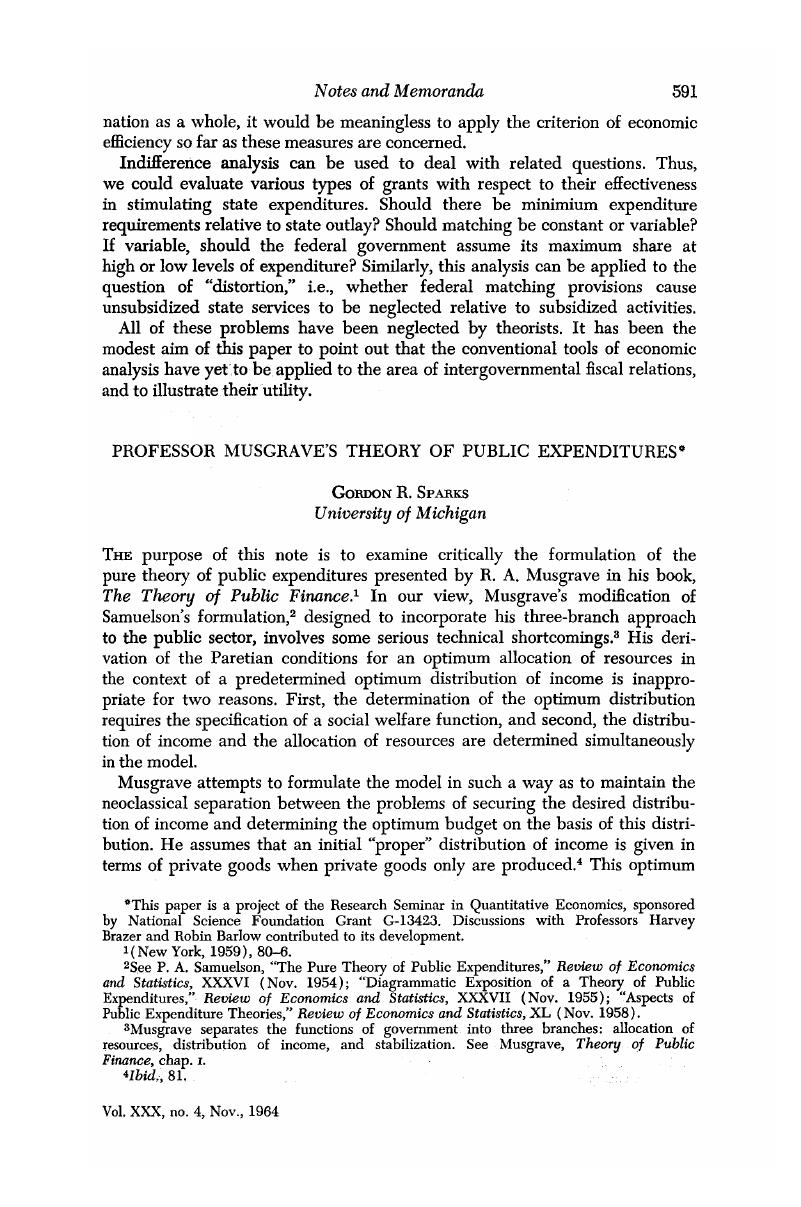No CrossRef data available.
Article contents
Professor Musgrave's Theory of Public Expenditures*
Published online by Cambridge University Press: 07 November 2014
Abstract

- Type
- Notes and Memoranda
- Information
- Canadian Journal of Economics and Political Science/Revue canadienne de economiques et science politique , Volume 30 , Issue 4 , November 1964 , pp. 591 - 594
- Copyright
- Copyright © Canadian Political Science Association 1964
Footnotes
This paper is a project of the Research Seminar in Quantitative Economics, sponsored by National Science Foundation Grant G-13423. Discussions with Professors Harvey Brazer and Robin Barlow contributed to its development.
References
1 (New York, 1959), 80–6.
2 See Samuelson, P. A., “The Pure Theory of Public Expenditures,” Review of Economics and Statistics, XXXVI (11 1954)Google Scholar; “Diagrammatic Exposition of a Theory of Public Expenditures,” Review of Economics and Statistics, XXXVII (11 1955)Google Scholar; “Aspects of Public Expenditure Theories,” Review of Economics and Statistics, XL (11 1958).Google Scholar
3 Musgrave separates the functions of government into three branches: allocation of resources, distribution of income, and stabilization. See Musgrave, Theory of Public Finance, chap. I.
4 Ibid., 81.
5 Ibid., chap. II.
6 Musgrave is not technically correct when he states that the utility frontier in Samuelson's model is an envelope of utility frontiers obtained by starting from different initial distributions; all points on Musgrave's segment satisfy the possibility function. See ibid., 84 n.
7 Given n private goods, m social goods, and s individuals, the Paretian optimum conditions are obtained by maximizing the utility of one individual subject to the following s + n constraints:
(1) The utilities of the other s−1 individuals are held at some fixed levels.
(2) The output of private and social goods is constrained by a transformation function.
(3) Total consumption of each of the n private goods equals total production. The solution of this constrained maximum problem leads to s(n—1) conditions for the marginal rates of substitution between pairs of private goods and m conditions for the marginal rates of substitution between private goods and social goods. We thus have n + m + ns equations in the n + m + ns unknowns. The possibility function is an implicit function in the levels of utility of the s individuals and is obtained by solving the m + n + ns — s + 1 equations given by the constraints (2) and (3) above and the marginal conditions.
8 Musgrave, , Theory of Public Finance, 84.Google Scholar
9 Provided the production functions exhibit constant returns to scale and that the usual second order conditions, such as convexity of indifference curves, are satisfied.
10 Samuelson, , “Pure Theory of Public Expenditures,” 388.Google Scholar
11 Musgrave, , Theory of Public Finance, 84.Google Scholar
12 Ibid., 85.


